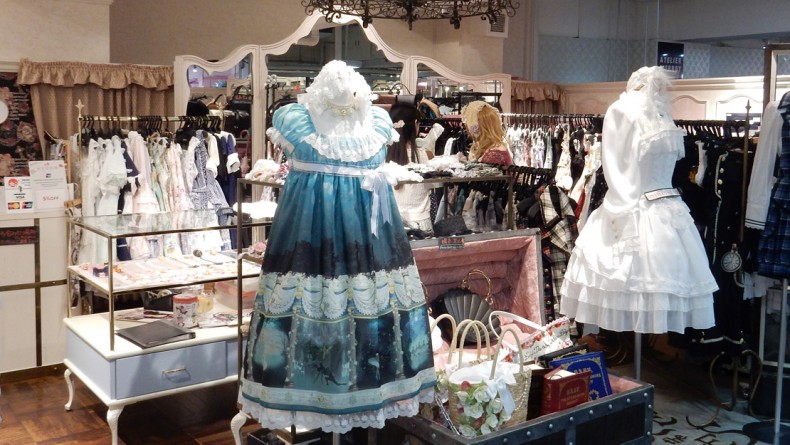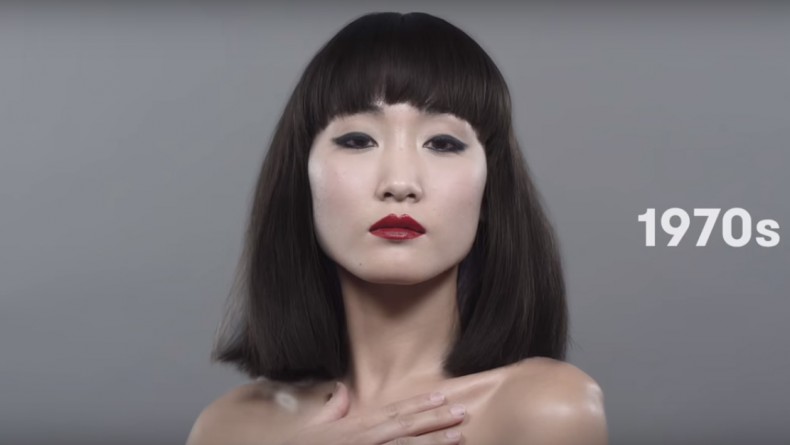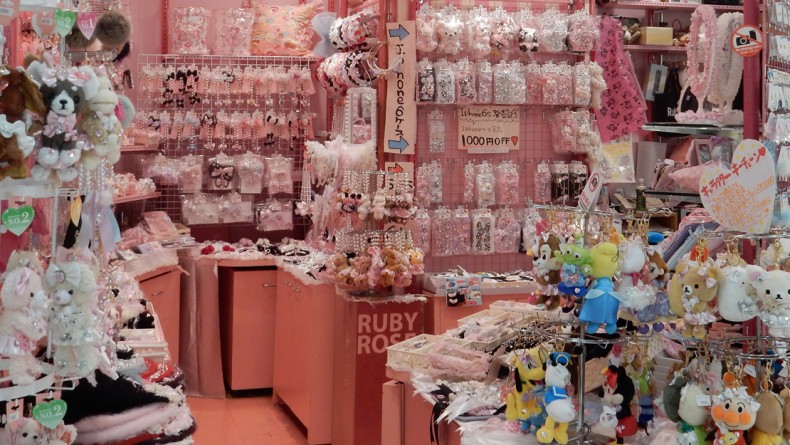4 Fashion Trends That Changed Japan’s History
From Lolita To Gyaru, And More
Call them cute, call them creepy, but you can't deny that these rebellious historic looks left a significant impact on Japan's fashion scene.
Trends come and go, and that’s bound to happen. But once in a while, you’ll see those popular swings come as a flash of light, turn everything upside down, and leave deep traces in their field. Just like Coco Chanel’s mini black dress, the platform shoes in the 1970s that Spice Girls popularized again in the ‘90s, and Twiggy’s amazing short cut, the following four fashion trends that were born in Japan have left a deep impact on the fashion frontier.
1. Lolita
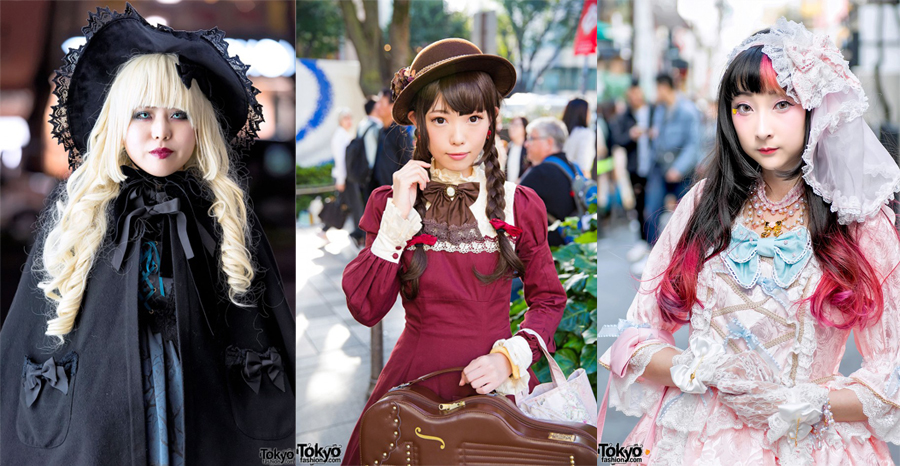
If you’ve seen girls in Harajuku looking like they just traveled back from 18th Century France, chances are you’ve seen the Lolitas. Their dresses are similar to Marie Antoinette’s but shorter; the prints vary from tea cups to horses and even crucifixes; the colors are for the most part pastel and simple, but the decorations, bags, shoes, and hats, are always striking. They often carry stuffed animals, too — because it’s cute!
The Lolita trend’s roots go back to 1987 when the popular fashion magazine Ryuko Tsushin first linked the L name to the unique Rococo-inspired look, though it isn’t particularly known why they went for it. It was gradually popularized in the late 1990s and 2000s by various fashion brands, establishing the trend as an official fashion category in magazines and stores.
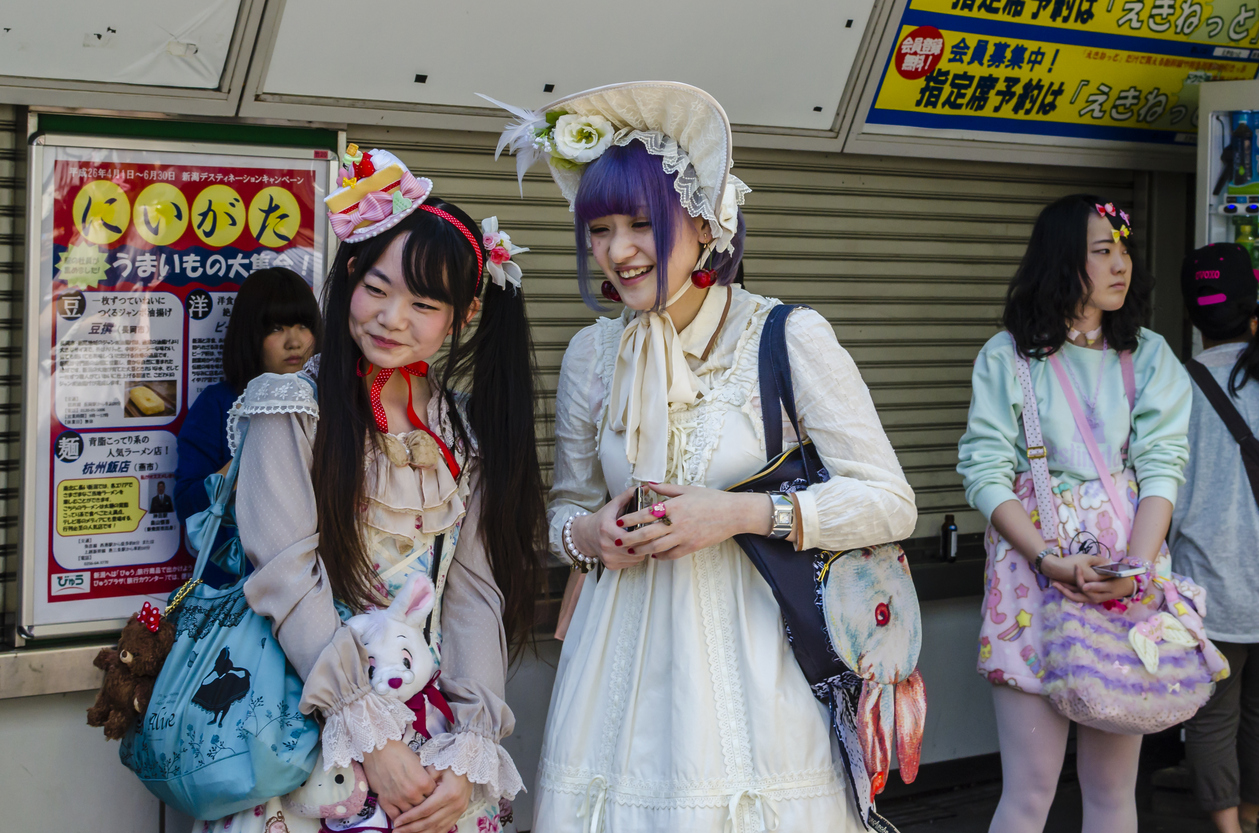
There are three main Lolita styles, Classic Lolita, Sweet Lolita and the Gothic Lolita. The most common is the Sweet Lolita, known for its cute dresses, pastel colors, and girly print motifs. Classic Lolita, which is the second most worn Lolita, tends to keep it down when it comes to makeup. They go for the semi-suppin makeup, meaning not full face makeup, and they stick to muted or dark colors, antique motifs, and florals. Sweet Lolita’s makeup is more dreamy, dramatic and cute. Gothic Lolita, on the other hand, gives you the vampy look, with focus on black and dark colors. The Goths stick to cathedral, crucifix, and chandeliers motifs for their dresses. Their makeup leans towards paler skin, and the gothic look is emphasized by white or black contacts.
Though in recent years we don’t see as many Lolitas as we did back in the days, it doesn’t mean the trend is gone. It hasn’t, and probably never will. Lolita fashion-specialized stores can be found all around Harajuku, including the popular Angelic Pretty, Alice and The Pirates, and Metamorphose temps de fille. The fashion was epitomized in the legendary 2004 movie Kamikaze Girls, reinforcing the Lolita trend buzz in Japan. Lolita is also perhaps one of the very few trends that even has its own organization — the Japan Lolita Association, founded in 2013, which now aims to spread the fashion and culture globally. As if it wasn’t popular already!
2. Gyaru
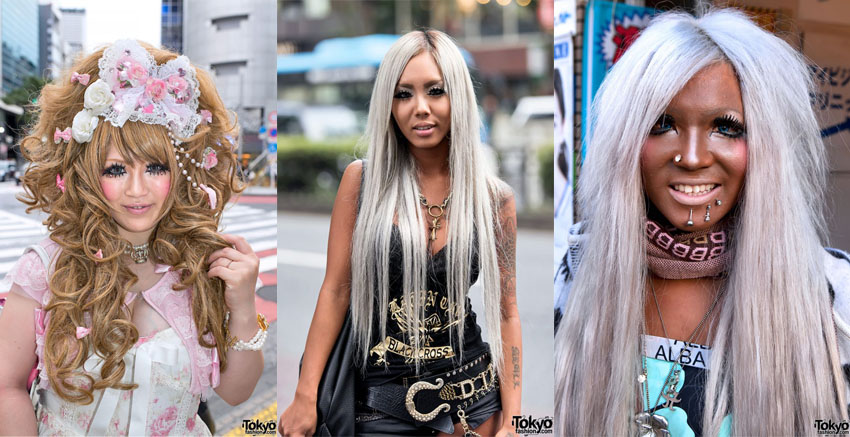 Gyaru is a Japanese transliteration of the the English word “gal.” The style goes back to 1970’s but did not really peak until 1990’s and early 2000. Though not as active as back in the days, if you hang out around Shibuya’s 109, you will still be able to spot some, including members of the famous gal circle “Black Diamond.”
Gyaru is a Japanese transliteration of the the English word “gal.” The style goes back to 1970’s but did not really peak until 1990’s and early 2000. Though not as active as back in the days, if you hang out around Shibuya’s 109, you will still be able to spot some, including members of the famous gal circle “Black Diamond.”
Gyaru are known for their tanned skin, over decorated nails, big hair, eyelashes, dramatic makeup — and of course, the infamous V-sign, called “peace sign” in Japan. Everything is characterized by over exaggeration — the hair is decorated with feathers, flowers, diamonds, and styled in the suji mori way, a type of a hairstyle where the hair is volumized and defined by strand. The nails are not only having diamonds and glitter but key chains with anime characters on and what not.
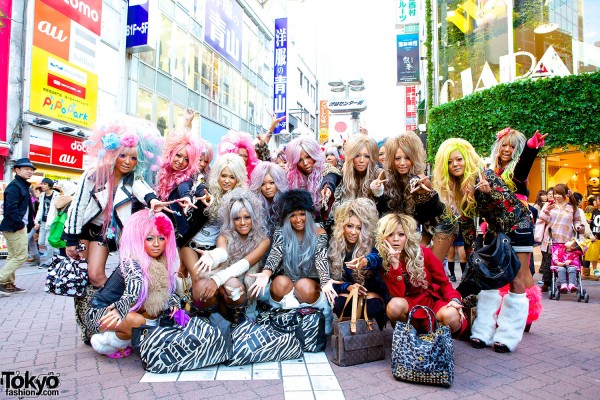
Though there are many versions of how the trend came around, one of the more common theories is that it originated as a rebellion against the frail-looking Japanese pale skin and moderate makeup. The gyaru wanted to show that they could be beautiful, bold and conspicuous, and there is certainly an element of admiration for the West, which back in the days represented power, diversity, strength, and everything cool. So instead of alternating their faces with plastic surgeries, the gyaru did it with makeup that made them stand out.
As Lolita and other styles, this trend has several different subcategories, the most common being the hime gyaru (princess gal), ganguro (black face), and kogyaru (school gal). Ganguro is further divided into two main categories, yamanba and banba. Yamanba and ganguro are usually characterized by flashy neon colors, white painted circles around the eyes, bleached hair, very tanned skin and white stripes on the highlight areas of their faces, whereas the hime gyaru and kogyaru rely on cuter clothing, yet still extreme hair volume and bold makeup.
3. Decora
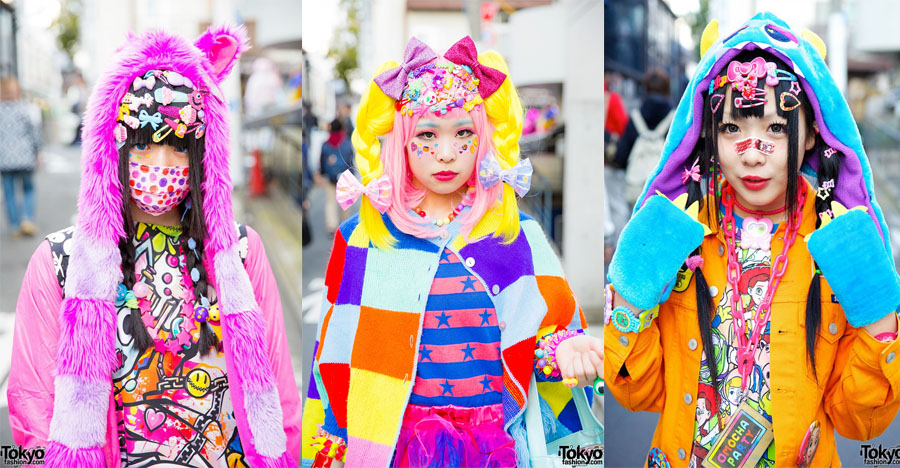 Decora, originating from the word “decoration,” is a style that took Japan and other countries by storm, also back in the late 90’s and early 2000s. Though it faded away quite fast as a trend, if you walk around the streets of Harajuku, you will still be able to witness its legacy.
Decora, originating from the word “decoration,” is a style that took Japan and other countries by storm, also back in the late 90’s and early 2000s. Though it faded away quite fast as a trend, if you walk around the streets of Harajuku, you will still be able to witness its legacy.
Despite its overwhelming look, the Decora style is in fact quite simple to pull off — you could wear a plain shirt with a hoodie and big short tutu-like skirts. The whole point of this style was to be as decorative as possible, meaning — fall into Claire’s sale pool, go to the cashier and decorate your bags, hoodies, socks, face, and hair. Decora was as well the style that made the patterned dental mask a hit, as well as arm warmers (remember those?) and frames-only-glasses.
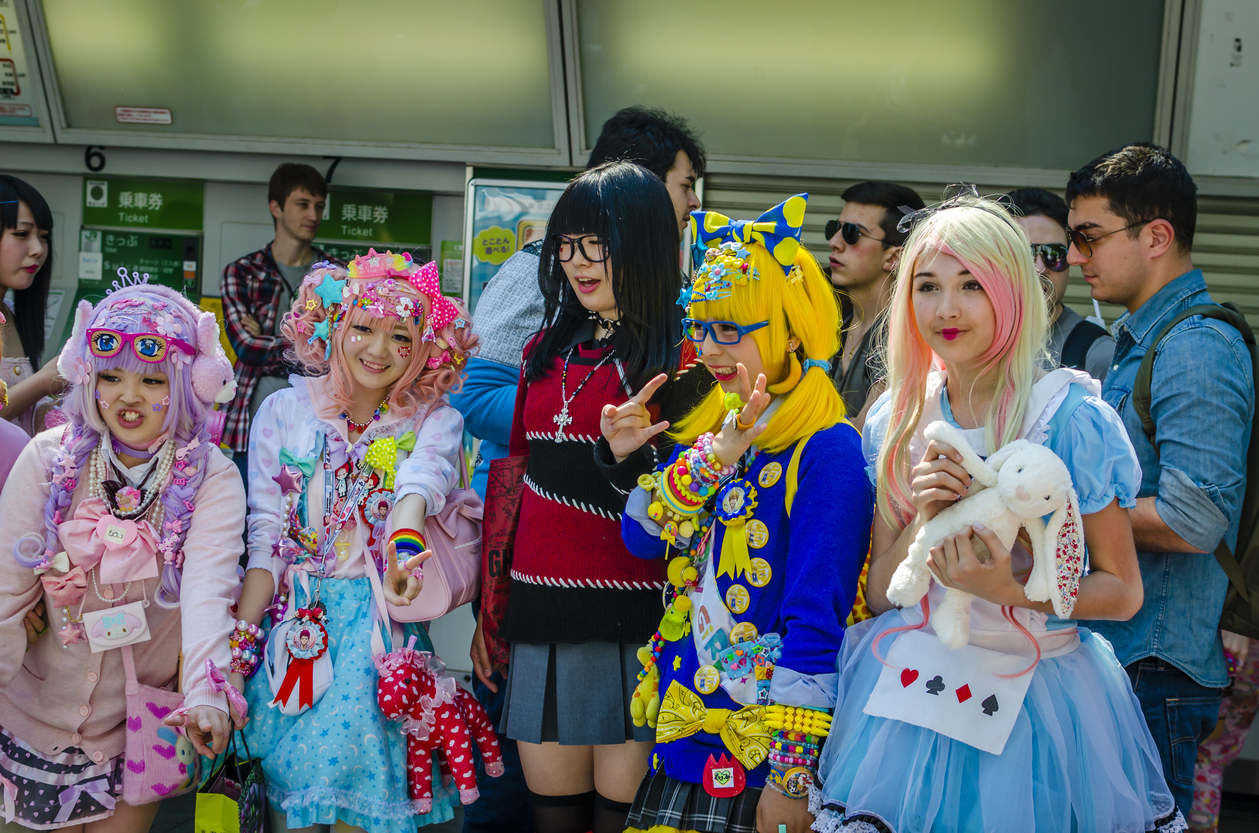 The Decora makeup is bold, often accompanied by colored contacts in hectic colors, dreamy black and brown, rainbow colors applied as eyeshadow, and eyebrows glitter in vibrant colors. The point is to wear more to stand out and never be bothered by what others think.
The Decora makeup is bold, often accompanied by colored contacts in hectic colors, dreamy black and brown, rainbow colors applied as eyeshadow, and eyebrows glitter in vibrant colors. The point is to wear more to stand out and never be bothered by what others think.
4. Visual-kei

Visual-kei is a unique fashion style going hand in hand with music trends. This trend has not died out just yet, though for the past couple of years it has been gradually vanishing and is now considered to be more of an underground style.
Visual-kei was originally inspired by the Western glam rock and grunge scene and was established back in the 1980s, though spread massively in the 90s and 2000s. It was popularized by bands such as X Japan, Buck-Tick, Luna Sea and Glay, that came to be known as “visual kei” bands, often characterized by hectic contact lenses, dark lipstick, multiple piercings, heavy contouring and enforced femininity, though there is, in fact, no standard makeup for Visual-kei. Everything depends on the band and the look they are going for.
 Like other styles from the same generation, the key characteristic of this trend was its expression of rebellion against traditional modest norms. Though no longer a popular trend, its legacy remains strong in Japan with not only the established word “visual kei” that goes just about to describe anyone into music who stands out, but also with the presence of the still existing specialized prints, including fashion magazines Shoxx and Stuppy.
Like other styles from the same generation, the key characteristic of this trend was its expression of rebellion against traditional modest norms. Though no longer a popular trend, its legacy remains strong in Japan with not only the established word “visual kei” that goes just about to describe anyone into music who stands out, but also with the presence of the still existing specialized prints, including fashion magazines Shoxx and Stuppy.
Which of these trends have you tried or are willing to try? Tell us in the comments!












